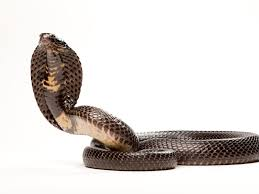Table of Contents
### Introduction
Snakes are among the most intriguing and diverse animals on Earth. With over 3,000 species spanning a wide range of habitats, they play crucial roles in various ecosystems. Despite their often fearsome reputation, snakes are vital to the balance of nature. This article delves into the anatomy, behavior, evolution, and ecological significance of snakes, providing a comprehensive overview of these remarkable reptiles.
### Body Structure
Snake possess a unique body structure that distinguishes them from other reptiles. Unlike most animals, they lack limbs, which contributes to their serpentine movement. Their elongated, flexible bodies are composed of numerous vertebrae, with some species having over 400. This high number of vertebrae allows for their characteristic slithering motion, which is achieved through a combination of muscle contractions and the use of scales.

### Scales and Skin
The skin of a snake is covered in overlapping scales made of keratin, the same protein found in human nails and hair. These scales serve multiple purposes: they provide protection, aid in locomotion, and help regulate moisture. Snakes periodically shed their skin in a process called ecdysis, which allows them to grow and remove parasites. During this process, they often seek out rough surfaces to help in peeling off the old skin.
### Sensory Adaptations
Snakes have evolved several specialized sensory adaptations to aid in hunting and survival. Most notably, they possess a highly developed sense of smell, which is facilitated by their forked tongues. When a snake flicks its tongue, it picks up scent particles from the air and transfers them to the Jacobson’s organ, a specialized sensory structure in the mouth that helps identify prey, predators, and mates.Additionally, many snake species have heat-sensing pits located on their heads, particularly in pit vipers. These pits detect infrared radiation from warm-blooded animals, allowing snakes to hunt effectively in the dark.
### Hunting and Feeding
Some species are constrictors, such as boas and pythons, which kill their prey by wrapping around it and squeezing until suffocation occurs. Others, like vipers and cobras, use venom to immobilize or kill their prey. Snake venom contains a complex mix of proteins and enzymes that can paralyze, digest, or deter prey.Snakes are generally carnivorous and feed on a diet that can include insects, rodents, birds, and even other reptiles. Their ability to consume prey larger than their head is facilitated by their highly flexible jaws, which are not rigidly attached to the skull. This adaptation allows them to stretch their mouths around large prey and swallow it whole.
### Reproduction and Life Cycle
Snake reproduction varies among species but generally involves internal fertilization. Most snakes lay eggs, although some, like boas and vipers, give birth to live young. The eggs of many species are laid in hidden or protected locations to avoid predation. After hatching, young snakes are often independent and must fend for themselves from a young age.
### Evolutionary History
Snakes have a long evolutionary history that dates back to the Late Cretaceous period, around 100 million years ago. Their ancestors were likely lizard-like reptiles that gradually evolved to lose their limbs and develop a more elongated body. Fossil evidence indicates that early snakes had functional limbs, which were later lost as they adapted to a burrowing or aquatic lifestyle.Over millions of years, snakes have diversified into thousands of species, each adapted to different ecological niches. This diversity is a result of evolutionary pressures such as predation, competition, and environmental changes.
### Major Snake Families
The snake family tree includes several major groups, each with distinct characteristics:- **Colubridae**: The largest snake family, including non-venomous species such as the garter snake and rat snake. Colubrids are found in a variety of habitats and exhibit diverse feeding behaviors.- **Viperidae**: This family includes venomous vipers and pit vipers, such as rattlesnakes and copperheads. They are characterized by their hinged fangs, which can deliver potent venom.- **Elapidae**: Elapids include venomous snakes such as cobras, kraits, and coral snakes.

### Role in Ecosystems
Snakes play several critical roles in their ecosystems. This predatory role can prevent the overpopulation of these species, which could otherwise lead to ecological imbalances.
### Conservation and Threats
While many snake species are abundant and widespread, some are threatened or endangered due to habitat loss, climate change, and human activities. Deforestation, urbanization, and agricultural expansion have led to the destruction of snake habitats, reducing their access to food and shelter.
### Mythology and Religion
Throughout history, snakes have held significant symbolic and mythological meanings in various cultures. In many ancient civilizations, snakes were seen as symbols of wisdom, transformation, and renewal. For example, in ancient Egypt, the cobra was associated with royalty and divine protection.
### Modern Perspectives
In modern times, snakes continue to captivate human imagination and interest. They are popular subjects in literature, film, and art, often symbolizing themes such as danger, temptation, and mystery. Efforts to educate the public about snakes and their ecological importance aim to foster a more balanced and informed view of these remarkable creatures.https://indianfastearning.com/
## Conclusion
Snake are a diverse and fascinating group of reptiles that play essential roles in their ecosystems. Their unique anatomy, varied behaviors, and evolutionary history make them a subject of ongoing scientific study and public interest. Despite their often misunderstood and feared reputation, snakes are crucial to maintaining ecological balance and biodiversity. By understanding and appreciating these remarkable animals, we can better protect and conserve their populations for future generations.http://www.youtube.com









